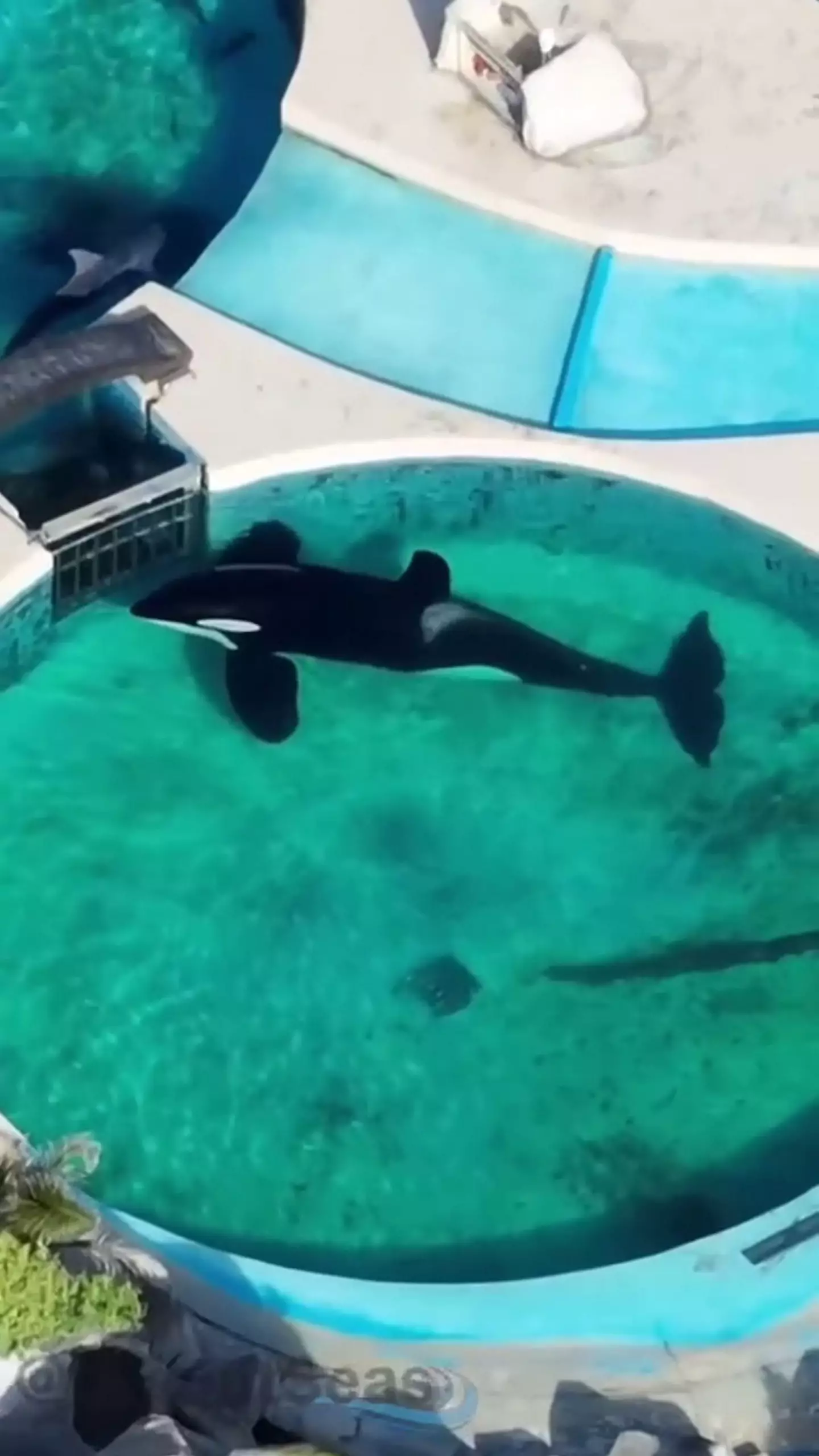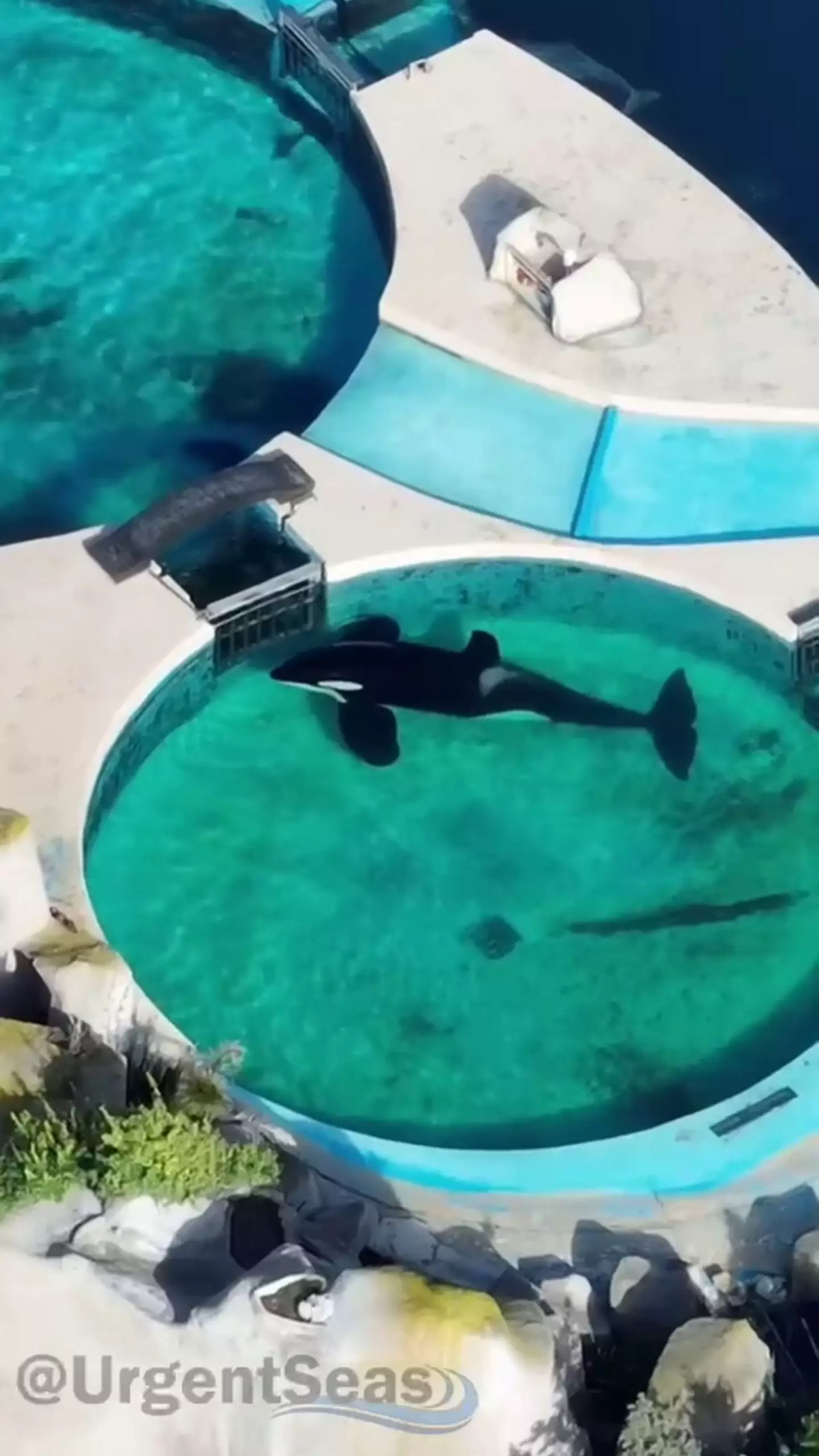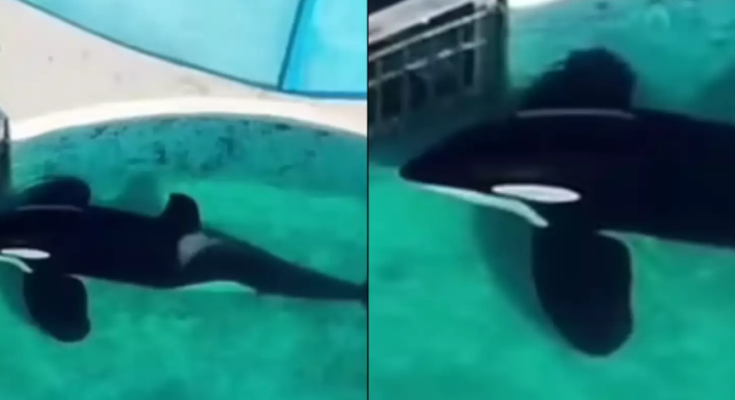Lone killer whale Kshamenk has been stuck in the tiny pool since 1992 in an Argentinian aquarium
A heartbreaking timelapse appears to show a captive killer whale laying motionless in a tiny pool at Argentina’s largest aquarium.
Kshamenk, who has been dubbed the ‘world’s loneliest orca‘, was seen in the video staring at a gate in the water for ’24 hours straight’ at the oceanarium called Mundo Marino.
You can see the devastating footage below:
The 35-year-old orca was brought in to the aquarium back in 1992 and has reportedly stayed there ever since.
Mundo Marino say they found Kshamenk beached on the bay when he was three years old alongside three other whales.
They claim that Kshamenk was then swiftly taken to a concrete tank at the aquarium, spending the past 32 years in a very small space.
Up until 2000, he was joined by female tankmate Belen who sadly died that same year.

The killer whale has been stuck in the tiny pool since 1992. (SWNS)
“Belen became pregnant with his first calf but delivered a stillborn in 1998. She became pregnant again the following year but died while pregnant in 2000,” the Whale Sanctuary Project said.
This means that Kshamenk has spent the last 24 years on his own.
The orca is now kept in a shallow, cramped pool while charities are calling to move him to an open sanctuary with other whales.
A 24-hour timelapse clip has since been shared online and it shows the orca barely making a move in the compact space.
A spokesperson from UrgentSeas said: “We continue to work with Argentinian activists and members of Congress to try to highlight and address his cruel world.
“He needs to be removed from his tiny concrete tank and to join other members of his species before it’s too late.”

The ‘world’s loneliest orca’ Kshamenk is kept at Mundo Marino in Argentina. (SWNS)
Meanwhile, according to the Dolphin Project, a 2006 Wild Earth Foundation study wrote that ‘Kshamenk’s population of origin is unknown, as well as his home range, and there is no data of any kind regarding killer whales found along the coast of North Buenos Aires. Thus, a reintroduction was not feasible’.
They also noted ‘if Kshamenk is released in the wild, he may revert to a previous pattern of behaviour that may put him in danger, such as begging for food or seeking human contact’.
“Animal protection organisations are skeptical of the story. Instead, they suggest, Kshamenk may have been forced ashore by people with an interest in circumventing Argentine laws against the commercial capture of wild marine mammals,” the Whale Sanctuary Project also said.

